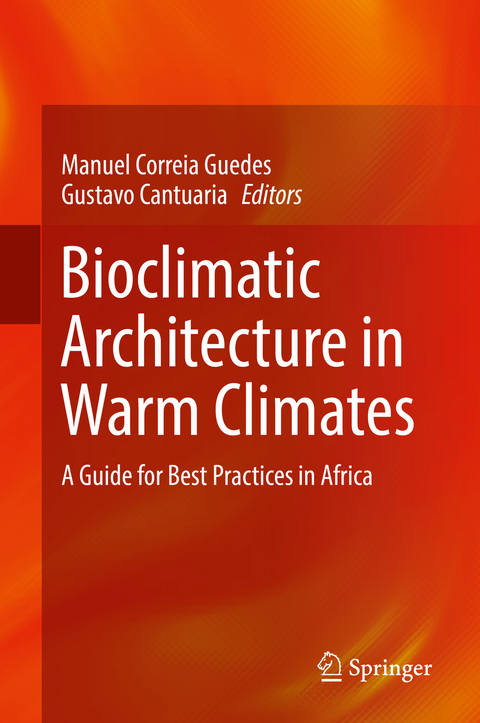
Bioclimatic Architecture in Warm Climates
Springer International Publishing (Verlag)
978-3-030-12035-1 (ISBN)
- Encompasses all climatic regions in Africa;
- Integrates bioclimatic design strategies with other sustainability issues;
- Discusses new design to refurbishment, from urban to rural, including office buildings, residential, tourism, social housing and self building.
Professor Manuel Correia Guedes is an Architect, Ph.D. (Univ. Cambridge), and Associate Professor at the Instituto Superior Técnico (IST). He is the former Head of the Architectural Research Centre of the IST (ICIST-G1), and former Director of the Course of Architecture. Dr. Guedes specializes in Sustainable Architecture, and is responsible for the disciplines of Environmental Design and Sustainable Architecture of the Master and Ph.D. courses. He is an active participant in national and international research projects in the area, and is the Coordinator of E.U. cooperation projects with Africa and Asia.
Chapter1: Introduction.- Chapter 2: Climatic Contexts.- Chapter3: Bioclimatic project: general guidelines.- Chapter4: Vernacular architecture in arid climates: adaptation to climate change.- Chapter5: Vegetation and environmental comfort.- Chapter6: Shading, Daylighting and Ventilation: Learning from Maputo.- Chapter7: Software Tools.- Chapter8: Slums in African cities.- Chapter9: Sustainability challenges for Sub-Saharan Africa: Vulnerability, Justice and Human capabilities.- Chapter10: Towards sustainable and smart cities in Africa: A review and challenges.- Chapter11: Urban Management the building permit in an urban land development context.- Chapter12: Energy saving strategies.- Chapter13: Masonry.- Chapter14: Timber.- Chapter15: Bamboo.- Chapter16: Water, sanitation and drainage.- Chapter17: Built environment assessment systems in Africa.
| Erscheinungsdatum | 15.05.2019 |
|---|---|
| Zusatzinfo | XII, 491 p. 387 illus., 318 illus. in color. |
| Verlagsort | Cham |
| Sprache | englisch |
| Maße | 155 x 235 mm |
| Gewicht | 913 g |
| Themenwelt | Naturwissenschaften ► Biologie ► Ökologie / Naturschutz |
| Technik ► Bauwesen | |
| Technik ► Elektrotechnik / Energietechnik | |
| Schlagworte | Bioclimatic Design • Biofuels • Dry and Wet Latrines • Environmental Assessment Methods • Evaporative Cooling • Insulation • Microclimate and Vegetation • Photovoltaics • Renewable energy systems • Solar Thermal • Sustainable Building • Urban Managment |
| ISBN-10 | 3-030-12035-X / 303012035X |
| ISBN-13 | 978-3-030-12035-1 / 9783030120351 |
| Zustand | Neuware |
| Informationen gemäß Produktsicherheitsverordnung (GPSR) | |
| Haben Sie eine Frage zum Produkt? |
aus dem Bereich


